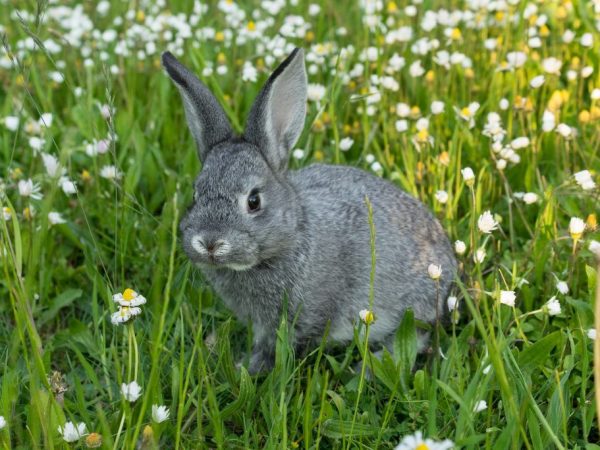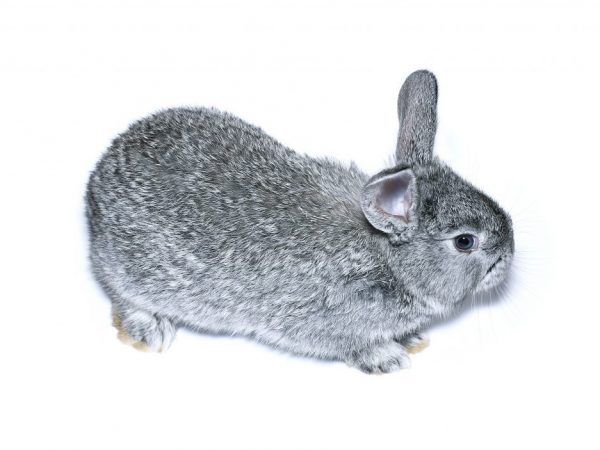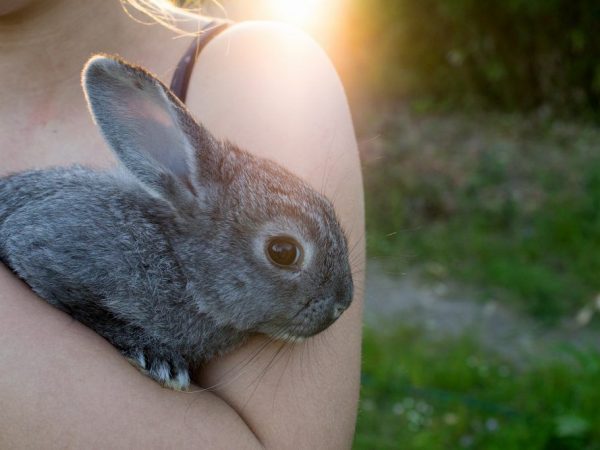Features of the Chinchilla rabbit
The Chinchilla rabbit is an animal, the main product obtained from which is fur. The animal got its name because of the similarity in appearance with the rodents of the same name.

Description of Chinchilla
At the moment there are 2 types of these rabbits, by weight they are small and large. Small ones can weigh up to 2.7 kg, while large ones weigh up to 4.7 kg. These animals are common in all countries. The skins are used with success in the outerwear industry.
Short description
Chinchilla rabbits have an excellent ability to adapt to almost any temperature, which makes it possible to breed them both in hot countries and in cold ones. They are unpretentious to feeding. The content also doesn't matter much for these animals.
At one time, the female can bring up to 10 rabbits. Female chinchilla rabbits provide a large amount of milk for raising offspring, which makes it possible to achieve almost 100% of the survival rate of young animals. The average lifespan of chinchilla rabbits is about 10 years.
A variety of the Soviet chinchilla has been bred in Russia. Its progenitors were European and American breeds. From such animals, you can get not only high-quality skins, but also delicious meat. Rabbit fur coats for chinchilla are very popular in our country, so breeding these rabbits is a productive business.
Characteristic
The body of the rabbit is compact but muscular. The body length can reach 62 cm in males and 55 cm in females. The chest is wide, slightly protruding forward. Its girth in the male is approximately 40 cm, in the female - 35 cm. The backbone is strong, the muscles are well developed, the head has an elongated shape, the ears are straight and stand. The eyes are large and can be of various colors: blue, gray or brown. The back of the body is rounded, the back is straight and strong.

Characteristic features of the Chinchilla
The female can be identified by the characteristic fold under the chin. The average weight of chinchilla rabbits is 4.5 kg. The color of the standard skin of this species is gray, turning into blue. The lower tier of the hairline has a blue tint, shimmering in a milky one. The next tier is white, the last one is black or brown. The wool of the eared animal is soft, elastic. The lower part of the animal and the area around the eyes have a lighter shade, and the tips of the ears and tail are darker.
Distinctive features
A beginner who wants to purchase this rabbit should pay attention to important differences so as not to be mistaken.
- Behavior. A normal healthy rabbit is active and very mobile, does not sit still. If the animal is lethargic, sleepy, it means that everything is not in order with its health.
- Appearance. Outwardly, the eared animal is distinguished by its muscles, which, although compact, are well developed. The color of the coat is between gray and blue. Ears, eyes, nasal and oral cavity should be clean, without any discharge. If in doubt, you can find videos and photos on the Internet, where it is possible to look more closely at these animals.
- Documentation.When purchasing a rabbit from private owners or on a farm, the buyer has the right to ask for documents for the animal, including a vaccination statement and a recent health certificate. If the farmer cannot provide rabbit health documents, it is worth inviting a veterinarian to purchase, who can determine if the animal is healthy.
Care and maintenance
Taking care of a chinchilla is not difficult, the main thing is to adhere to some principles.
- It is best to keep chinchillas in cages. In the summer, you can keep the animals outside in the aviary, in the winter - at home. The temperature should be between 13 ° C and 20 ° C.
- Drafts, sudden changes in temperature, rain are the causes of colds in rabbits, which are often fatal.
- The room where eared animals live should be well and often ventilated. The place must be dry with adequate lighting. Cleanliness must be of a high standard to avoid various infectious diseases.
- Direct sunlight can harm rabbits. Animals can overheat, heat or sunstroke. In winter, when darkness prevails, it is advisable to leave the lighting longer than usual, since a lack of light contributes to a decrease in immunity, and in some cases even leads to infertility.
- The cages can be 2 stories high if there are a lot of rabbits. Single-storey cages can be mounted on pillars of about 75 cm. The metal bottom usually consists of cells measuring 1.5 x 1.5 cm. Sometimes double aviaries are built, in which there must be a partition. The nest boxes are made of wood, just like the material for the roof.
Feeding
The normal development of rabbits depends on proper nutrition. The diet of chinchillas should include juicy feed, coarse, green, animal, concentrated, food waste, as well as vitamins and minerals. In summer and spring, rabbits need a lot of green food. Vitamins and trace elements, which are sufficient in greens, will fully satisfy their needs.

How to care for a chinchilla rabbit
The most suitable herbs for feeding are plantain, clover, sunflower. But this does not mean that nothing else can be given.
The best branches of bushes for rabbits are currants and raspberries, trees are apple, linden. Grain mix is also a good choice.
In winter and autumn, warm food and water should be preferred. Food should be high in calories. Dry grasses, hay, twigs, grains are the basis of the diet during the cold season. Green forages are replaced with succulent ones. A more detailed description of the content can be found in the video about breeding chinchilla rabbits.
Fur products
Chinchilla fur coats are very popular all over the world, but the price for them is very high. Eared animals of the chinchilla breed are just a godsend for breeders who breed pets for fur.
Seeing a short fur coat or a fur vest in the photo, where the basis is rabbit fur, it is impossible to distinguish them from chinchilla products. Customer reviews prove that long-eared chinchilla fur coats are in no way inferior to expensive rodent products.
If you are interested in a chinchilla and a rabbit, their characteristics are available on the Internet for review. Breeding such beautiful animals at home in order to get high-quality fur for a fur coat, the breeder must know about all the subtleties and nuances.


